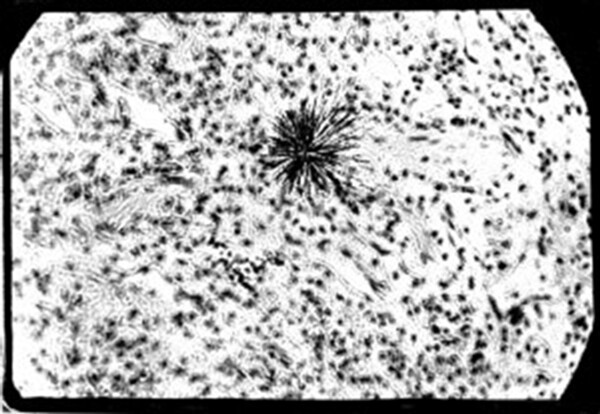Safe Radiation, Clean Coal, and the Tooth Fairy

In a Feb. 2 letter, Bill Rees claims “Scientists disagree on which [radiation risk] model should be used because the long-studied data are still considered inconclusive.” This assertion is false. The standard-setting National Academy of Sciences’ (NAS) book-length report Biological Effects of Ionizing Radiation-7 (BEIR-VII) concludes that any exposure can induce cancer, and, “there is a linear dose-response relationship between exposure to ionizing radiation and the development of radiation-induced solid cancers in humans.” But like climate change deniers who pay a few researchers with fossil fuel profits to pretend there’s disagreement about its causes, there are a few “captured” university and industry advocates who still want a weakening of radiation exposure rules. To save money, the nuclear industry has for decades pushed for higher allowable exposures and deregulation of radioactive pollution.
As the journal Science reported in 1999,”Billions of dollars are at stake. Stricter standards could increase the amount that agencies and industries must spend to clean up radioactive waste and protect workers.” In 2002, Roger Clarke, then with the International Commission on Radiological Protection, warned, ”Some people think that too much money is being spent to achieve low[er] levels of residual contamination.” They want, “a threshold in the dose-response relationship in order to reduce the expenditure,” Clark said. The Wall Street Journal’s reported Aug. 12, 2016 that, “Moving from the LNT model could greatly reduce the costs of cleaning up contaminated sites, said Edward Calabrese, a toxicology professor at the University of Massachusetts in Amherst.”
Today, there is no disagreement among “non-captured” regulators or scientists. The NAS, the Nuclear Regulatory Commission (NRC), the Department of Energy (DOE), the Dept. of Health & Human Services (DHHS) and the National Council on Radiation Protection all agree that no matter how small there is no safe radiation exposure.
The DOE makes an additional warning that Mr. Rees ignores: “US government regulations assume that the effects of all radiation exposures are cumulative and should be limited as much as reasonably possible.” And DHHS says about nuclear medicine: “Some patients who receive radiation to treat cancer or other conditions may be at increased cancer risk.”
Like “clean coal” theory, the threshold model is wholly without merit
BEIR-VII explicitly repudiated the so-called “hormesis” theory, Mr. Rees’ “threshold model,” the fairy tale that low-dose radiation exposures are harmless. As NAS committee member Herbert L. Abrams of Harvard said, “There appears to be no threshold below which exposure can be viewed as harmless.” Dr. Peter Crane, a former NRC Attorney for Special Projects, pointedly said: “[T]he National Academies of Science, along with the rest of mainstream scientific authority, regard hormesis as wholly without merit.”
Another study, published in the Nov. 2005 journal Radiation Research, was reported by Science magazine to be, “the latest blow to the [hormesis] notion that there is a threshold of exposure to radiation below which there is no health threat (and there might even be a benefit).” Lynn Anspaugh, at the University of Utah, called the report “a setback for those who hope for a relaxation of the standards.”
In 2015, the journal Nature noted a major international study in Lancet Haematology that it said “…scuppers the popular [hormesis] idea that there might be a threshold dose below which radiation is harmless -- and provides scientists with some hard numbers to quantify the risks of everyday exposures.”
Yet the fraud is promoted by industry and the few academics in its pocket in order to weaken protections against routine radioactive emissions from nuclear reactors, uranium mines, reactor fuel fabricators, medical isotope producers, etc. -- and to cut the colossal costs of compensation, relocation, and clean-up following catastrophic releases like the “green run” in Washington state (1949), Windscale in England, and Kyshtym in Russia (both 1957), the Fermi 1 meltdown near Detroit (1966), Three Mile Island (1979), Chernobyl (1986) and Fukushima (2011).
In 2004, the British government’s Committee Examining Radiation Risks of Internal Emitters reported that radiation legally vented and released by operating reactors may be up to 10 times more hazardous when ingested or inhaled than previously estimated. The committee concluded that “the present cancer epidemic is a consequence of exposures to global atmospheric weapons fallout in the period 1953-62, and that more recent releases of radioisotopes to the environment from the operation of the nuclear fuel cycle will result in significant increases in cancer and other types of ill health.” Public health requires that we demand tougher, not weaker, radiation protections.
- For a referenced, 9-page analysis of this issue ask <nukewatch1@lakeland.ws> for its Nov. 2015 comments to the NRC on “Linear No-Threshold Model and Standards for Protection Against Radiation.”